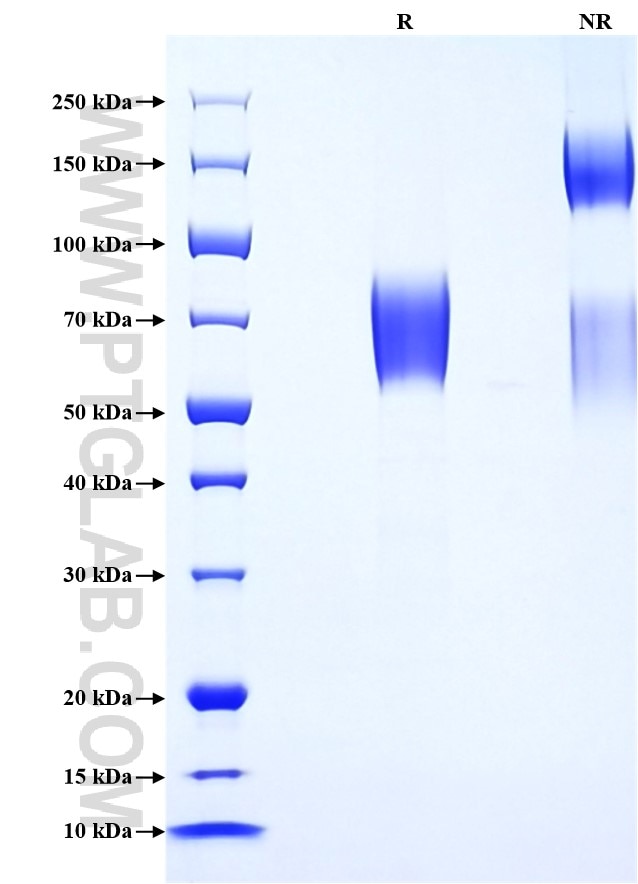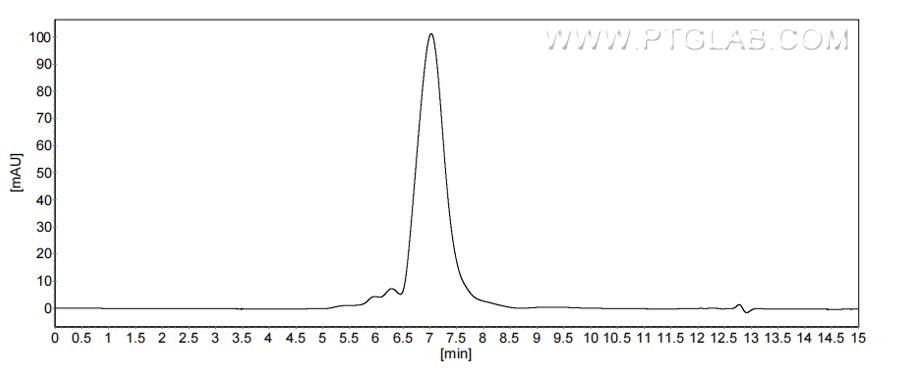Recombinant Mouse IL-15RA protein (rFc Tag)(HPLC verified)
Species
Mouse
Purity
>90 %, SDS-PAGE
>90 %, SEC-HPLC
Tag
rFc Tag
Activity
not tested
Cat no : Eg2687
Validation Data Gallery
Product Information
| Purity | >90 %, SDS-PAGE >90 %, SEC-HPLC |
| Endotoxin | <0.1 EU/μg protein, LAL method |
| Activity |
Not tested |
| Expression | HEK293-derived Mouse IL-15RA protein Gly33-Lys205 (Accession# Q60819-1) with a rabbit IgG Fc tag at the C-terminus. |
| GeneID | 16169 |
| Accession | Q60819-1 |
| PredictedSize | 44.4 kDa |
| SDS-PAGE | 55-85 kDa, reducing (R) conditions |
| Formulation | Lyophilized from 0.22 μm filtered solution in PBS, pH 7.4. Normally 5% trehalose and 5% mannitol are added as protectants before lyophilization. |
| Reconstitution | Briefly centrifuge the tube before opening. Reconstitute at 0.1-0.5 mg/mL in sterile water. |
| Storage Conditions |
It is recommended that the protein be aliquoted for optimal storage. Avoid repeated freeze-thaw cycles.
|
| Shipping | The product is shipped at ambient temperature. Upon receipt, store it immediately at the recommended temperature. |
Background
Interleukin-15 (IL-15) is a pleiotropic cytokine that plays an important role in both innate and adaptive immunity. IL-15 is mainly produced by activated monocytes, macrophages and dendritic cells, and is structurally similar to IL-2. These two cytokines share the same IL-2/15Rβ and common γ-chain receptor subunits. In addition, IL-2 and IL-15 have their own private α-chain receptor subunit, IL-2Rα and IL-15Rα, respectively. The IL-15Rα chain is expressed by many cell types including monocytes, DCs, NK, T cells and fibroblasts. Several isoforms of IL-15Rα exist and are generated either by alternative splicing or by proteolytic cleavage.
References:
1. Grabstein KH, et al. (1994) Science.13;264(5161):965-8. 2.Lodolce JP, et al. (2002) Cytokine Growth Factor Rev. 13(6):429-39. 3.Giri JG, et al. (1995) EMBO J. 1;14(15):3654-63. 4.Dubois S,et al. (1999) J Biol Chem. 17;274(38):26978-84. 5.Mortier E, et al. (2004) J Immunol. 1;173(3):1681-8.

